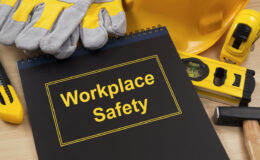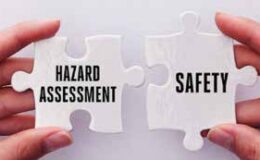By Chris Demeter, Senior Loss Control Consultant
OSHA has expanded the list of severe injuries & illnesses that employers must report and updated the list of industries who are partially exempt from routinely keeping OSHA records.
“OSHA will now receive crucial reports of fatalities and severe work-related injuries and illnesses that will significantly enhance the agency’s ability to target our resources to save lives and prevent further injury and illness. This new data will enable the agency to identify the workplaces where workers are at the greatest risk and target our compliance assistance and enforcement resources accordingly.”
— Assistant Secretary of Labor for Occupational Safety and Health, Dr. David Michaels
For workplaces under Federal OSHA jurisdiction
- Final rule becomes effective January 1, 2015 For workplaces in State Plan States (MIOSHA)
- States encouraged to implement new coverage provisions on January 1, 2015, or as soon after as possible.
The rule expands the list of severe work-related injuries and illnesses that all covered employers must report.
Starting January 1, employers must report the following:
- All work-related fatalities within 8-hours (same as current requirement)
- All work-related in-patient hospitalizations of one or more employees within 24-hours
- All work-related amputations within 24-hours
- All work-related losses of an eye within 24-hours
- If the injury or illness resulted in a fatality, hospitalization, amputation or loss of an eye
- If you are in an industry covered by OSHA’s updated recordkeeping requirements, also make a record of the injury or illness in the OSHA 300-Log.
OSHA believes the updated reporting requirements are not simply paperwork, but have a life-saving purpose: They will enable employers to prevent future injuries by identifying & eliminating the most serious workplace hazards.
OSHA feels they will be able to engage with employers not just through inspections, but through outreach to fix hazards before they become fatal.
Please note:
- In-patient hospitalization is defined as a formal admission to the in-patient service of a hospital or clinic for care or treatment.
- Only fatalities occurring within 30-days of the work-related incident must be reported.
- Only in-patient hospitalizations, amputations, or losses of an eye occurring within 24-hours of the work-related incident must be reported.
Employers do not have to report an event if:
- It resulted from a motor vehicle accident on a public street or highway, except in a construction work zone (employers must report the event if it happened in a construction work zone).
- It occurred on a commercial or public transportation system (e.g. airplane, subway, bus, ferry, streetcar, light rail, train).
- It occurred more than 30-days after the work-related fatality or more than 24-hours after the work-related in-patient hospitalization, amputation, or loss of an eye.
- If the in-patient hospitalization was for diagnostic testing or observation only.
 How can employers report to MIOSHA?
How can employers report to MIOSHA?
Fatality or Catastrophe Hotline: 800.858.0397
MIOSHA’s website: www.michigan.gov/miosha
Industry exemptions
- The rule also updates the list of industries that are partially exempt from the requirement to routinely keep OSHA injury & illness records (e.g. the OSHA 300-log), due to relatively low occupational injury & illness rates.
- The new rule retains the exemption for any firm with ten or fewer employees, regardless of their industry classification, from the requirement to routinely keep records.
- Reminder: All employers, even those exempt from recordkeeping requirements, must report a work-related fatality, in-patient hospitalization, amputation, or loss of an eye to OSHA.
- The previous list of exempt industries was based on the old Standard Industrial Classification (SIC) system, as well as injury & illness data from the Bureau of Labor Statistics (BLS) from 1996, 1997 & 1998.
- The new list is based on the North American Industry Classification System (NAICS), as well as BLS data from 2007, 2008 & 2009.
Finding your industry code (NAICS)
- First find your NAICS code at www.census.gov/eos/www/naics
- Then visit OSHA’s page at www.osha.gov/ recordkeeping2014 to determine if your industry is exempt.
For employers who are new to keeping records, download OSHA’s 300-Log from the MTMIC secure client portal login through our website: https://www.mtmic.com/blog/
If you have any questions about the new reporting requirements, contact your Loss Control Consultant.





